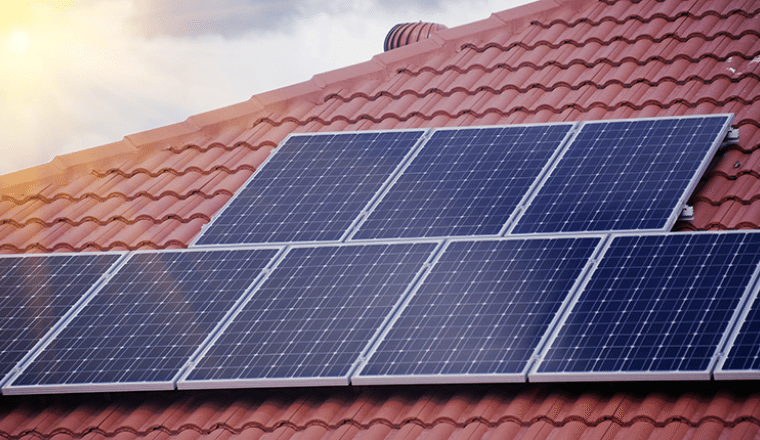

One in four Australians would use solar and battery storage to quit the electricity grid, a new report has claimed, as part of a “very Australian energy revolution” largely driven by grassroots demand.
The Australia Institute report, Securing renewables: How batteries solve the problem of clean electricity, charts the progress of battery storage technology in Australia, as falling costs combine with increasing consumer dissatisfaction to set the stage for a major disruption of the energy status quo.
The report, which includes the results of recent TAI polling, points to significant public support for distributed solar and battery storage as both a consumer choice and a national policy priority in the lead up to the federal election.
“The rapid uptake of batteries is going to drive a very Australian energy revolution,” the report’s author Dan Cass says. “It is being driven by grassroots consumer demand rather than a consistent national policy.
“It will gather momentum because of the vast size of our electricity network and relatively low population density, consumer self-interest, unpredictable technological innovation, environmental concern and perversely, a conservative electricity industry that is generally resisting the transition to the smart grid future that storage technologies enable.
Cass also points to the end of feed-in tariffs in 2016 as another incentive for solar households to become early adopters of batteries.
“If solar households do embrace battery storage then this will lead to lower prices for future market segments, which are less adventurous,” he says. Either way, “consumers are going to turn to storage whether or not reforms to the electricity sector encourage them.”
Not surprisingly, the TAI survey finds that the vast majority of early battery storage adopters would will be driven by the dollar – a desire to reduce their electricity bills.

Of the 1412 people surveyed, 74 per cent attributed their interest in batteries to saving money, presumably by storing and therefore using more of the solar energy they generate on their rooftops, rather than sending it to the grid.
Of those surveyed who had already installed rooftop solar, 81 per cent expressed interest in getting batteries to store the excess power they generate.
But a surprising 23 per cent of respondents said they would invest in battery storage as a means to quit the grid entirely. Another 39 per cent said they would buy batteries to gain independence from their energy company.
“These results are a rejection of business-as-usual in the electricity sector and show that Australians are keen to use technologies that threaten established energy companies.”
And the threat here is not only levelled at energy incumbents. The survey also contains a message to politicians, that 71 per cent of respondents would consider voting for a party that supported small-scale solar and storage.
Interestingly, the survey also found that 34 per cent of respondents would invest in battery storage with a payback period of five years or more; which Cass says suggests that “early adopters of storage are likely to be a significant market, driving down costs and increasing community awareness of the benefits of the technology.”
Up to one in 10 (9%) respondents were prepared to wait even longer, for eight or more years, for their battery system to pay itself back (see Figure 8).

On the topic of battery cost, the report points to the plunging cost of lithium-ion battery technology as an indicator of how quickly batteries will become economic for the average household.
As you can see in the chart below, mass production and continual innovation of lithium-ion batteries for mobile phones, laptops and electric vehicles has brought the cost of the technology down 90 per cent over 16 years from $US3,185/kWh in 1995 to $US320/kWh in 2011, according to Citigroup. Costs continued to decline from 2011-2014 by almost another third.

The report also cites the example of Australia’s own Redflow “flow battery” technology, which as we reported here, claims to have cut the cost of its technology by more than 50 per cent.
So where does this leave Australia and Australian consumers?
“If Australia is smart,” says Cass, “we can create local jobs and generate export opportunities right across the value chain, from the storage hardware, to control software and in creative new finance and business models that can power the smart grid of the future.
“This is good news for policy makers and politicians, because many Australian homes have already invested in solar PV and solar hot water and a super majority of the public supports renewable energy generally,” he writes.
“It should be easy to get cross-party support for good policies that support the rise of storage and smart grids, create jobs, improve productivity and reduce pollution.”
But, there is a but. “Unfortunately,” writes Cass in the report, “Australia does not yet have a framework in place that would allow storage to compete on a level playing field with coal and other conventional energy assets.
“Regulators are yet to acknowledge this officially, but privately they see that batteries are radical and beneficial disrupters, because they can enable genuine competition.
“There is a risk that vested interests will have an undue influence over the reform process and even hold back consumers and others who wish to invest in storage,” he says.

Sophie is editor of One Step Off The Grid and editor of its sister site, Renew Economy. Sophie has been writing about clean energy for more than a decade.

